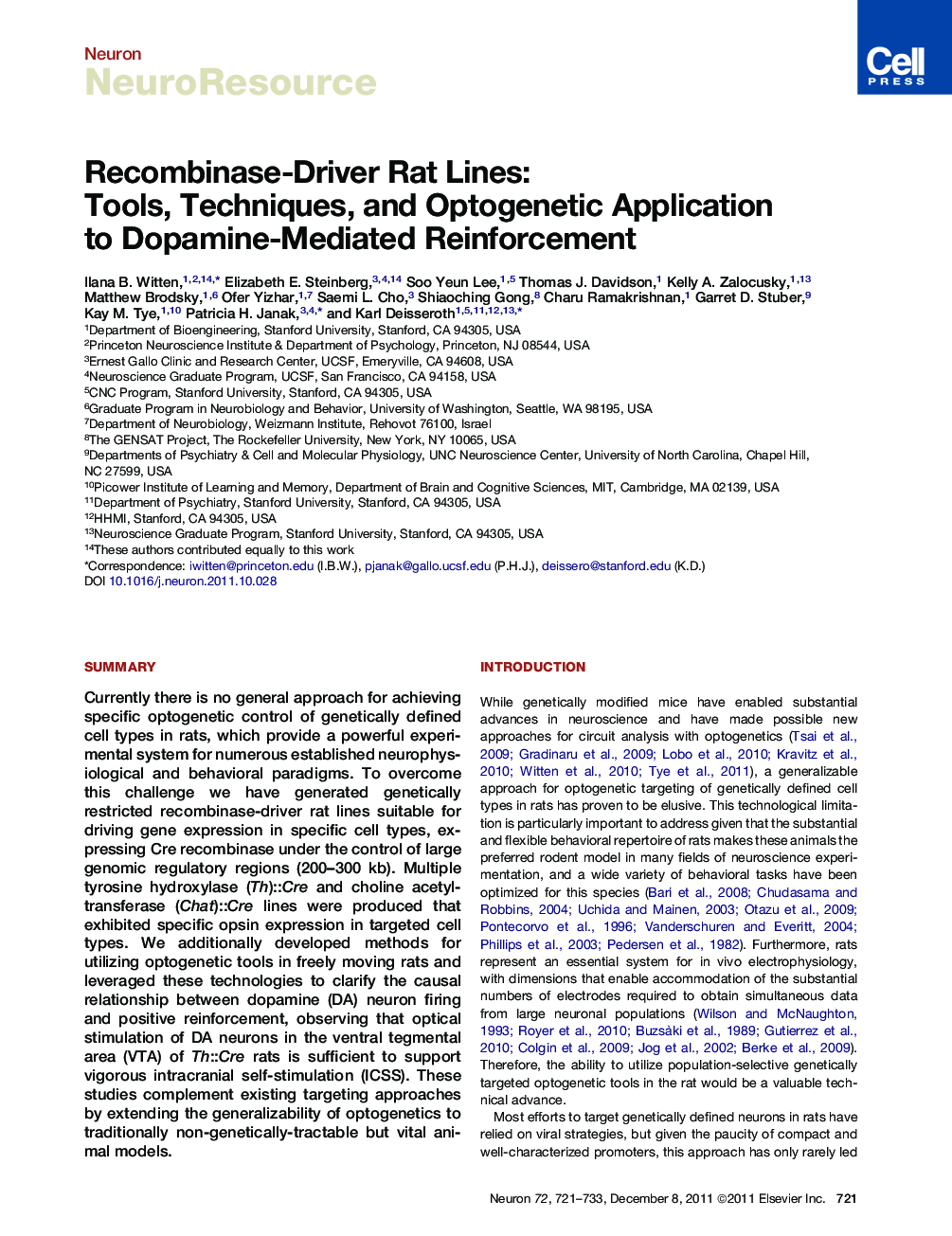| Article ID | Journal | Published Year | Pages | File Type |
|---|---|---|---|---|
| 4321429 | Neuron | 2011 | 13 Pages |
SummaryCurrently there is no general approach for achieving specific optogenetic control of genetically defined cell types in rats, which provide a powerful experimental system for numerous established neurophysiological and behavioral paradigms. To overcome this challenge we have generated genetically restricted recombinase-driver rat lines suitable for driving gene expression in specific cell types, expressing Cre recombinase under the control of large genomic regulatory regions (200–300 kb). Multiple tyrosine hydroxylase (Th)::Cre and choline acetyltransferase (Chat)::Cre lines were produced that exhibited specific opsin expression in targeted cell types. We additionally developed methods for utilizing optogenetic tools in freely moving rats and leveraged these technologies to clarify the causal relationship between dopamine (DA) neuron firing and positive reinforcement, observing that optical stimulation of DA neurons in the ventral tegmental area (VTA) of Th::Cre rats is sufficient to support vigorous intracranial self-stimulation (ICSS). These studies complement existing targeting approaches by extending the generalizability of optogenetics to traditionally non-genetically-tractable but vital animal models.
► Generation of Th::Cre rat lines for targeting dopaminergic and noradrenergic cells ► Generation of Chat::Cre rat lines suitable for targeting cholinergic neurons ► Methods for optogenetic control of physiology and behavior in freely moving rats ► Stimulation of dopamine neurons supports intracranial self-stimulation in rats
